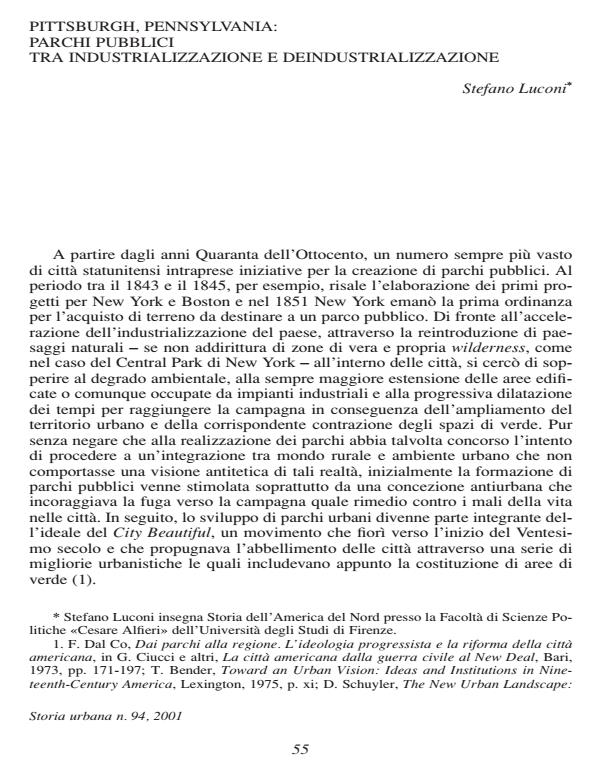Pittsburgh, Pennsylvania: parchi pubblici tra industrializzazione e deindustrializzazione
Journal title STORIA URBANA
Author/s Stefano Luconi
Publishing Year 2002 Issue 2001/94
Language Italian Pages 16 P. File size 71 KB
DOI
DOI is like a bar code for intellectual property: to have more infomation
click here
Below, you can see the article first page
If you want to buy this article in PDF format, you can do it, following the instructions to buy download credits

FrancoAngeli is member of Publishers International Linking Association, Inc (PILA), a not-for-profit association which run the CrossRef service enabling links to and from online scholarly content.
The creation of public parks in Pittsburgh was strictly related to the rise and fall of this city as a leading center for the production of steel. In the face of a convulsive industrial growth in the last few decades of the XIX-century, parks were established to offset Pittsburgh’s unhealthy and smoky environment with bucolic settings that aimed at both letting residents relax and pacifying the city’s allegedly disruptive working class. Following the emergence of deindustrialization in the postwar years, the construction of Point and Mellon Parks became part of a broader program that intended to rescue Pittsburgh from urban blight and economic decline, to prevent the flight of corporations, to attract new investment, and to help the transition of the city to a service economy by improving, modernizing, and reconstructing its central business district.
Stefano Luconi, Pittsburgh, Pennsylvania: parchi pubblici tra industrializzazione e deindustrializzazione in "STORIA URBANA " 94/2001, pp , DOI: